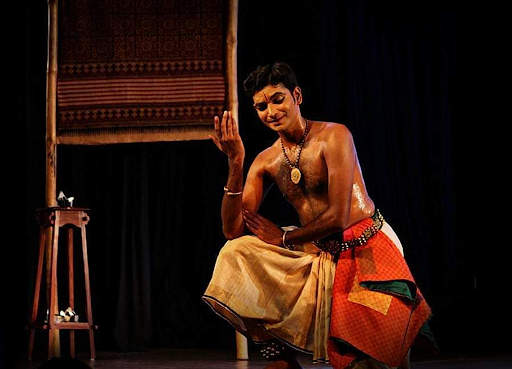
K.P. Rakesh
Tirupati Brahmotsavam was the theme assigned to dancerchoreographer K.P. Rakesh and troupe. Instead of a speaker preceding the event, an audio-visual presentation describing the festival and its various events was played.
Rakesh approached his subject in a refreshing, unique manner. He neatly described the celebration of the annual festival in a straightforward manner; there was no story or philosophical angle to the presentation. It was a pure description of the joyous atmosphere of the holy hills during this great festival. From the ‘Dhwajaroham’—hoisting of the flag, to the ‘Chakrasnana’ on the concluding ninth day— depicting the immersion of the idol of Chakratalwar in the pushkarini, the dancing group was able to convey effectively the joy and fervour that pervades the precincts of the holy hills during the nine days.
Even the choice of music was uncomplicated. Rakesh used Annamacharya’s compositions for all the events portrayed. Such songs as Brahmamokatey, Adivo alladivo, Tiruveethula merasi, and Itu garudani, the absolute gems, were rendered beautifully and performed exemplarily by the group. Stage decor was also tasteful and colourful, which helped create the right mood for the performance.
The ‘Chinna-sesha vahanam’ was wonderfully performed by four dancers who showed us how a serpent moves with grace. Then it was the ‘Rathotsavam’ that caught the eye. The pulling of the chariot and, more specifically, the joyous dancing of the accompanying crowd—using the folk tradition of the region, which happens in reality during this festival, these folk dances were performed wonderfully well by the group. It was truly a group effort, and all the dancers contributed equally to the spectacle, which was good to behold.
The music sung by Sivasri Skandaprasad and the orchestra led by Girish Madhu (nattuvangam), was of a very high standard which enhanced the whole performance. A memorable day for the rasikas.
